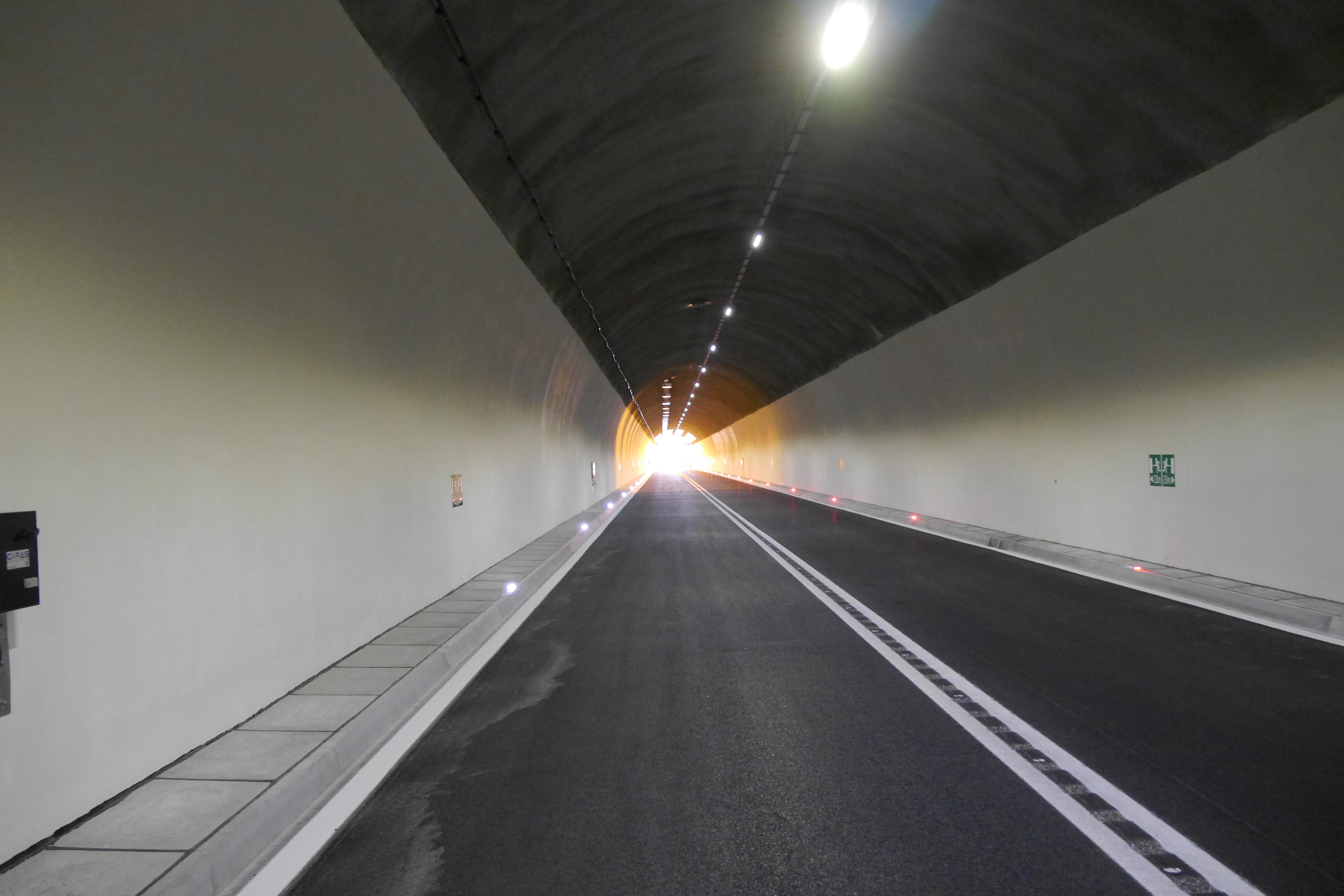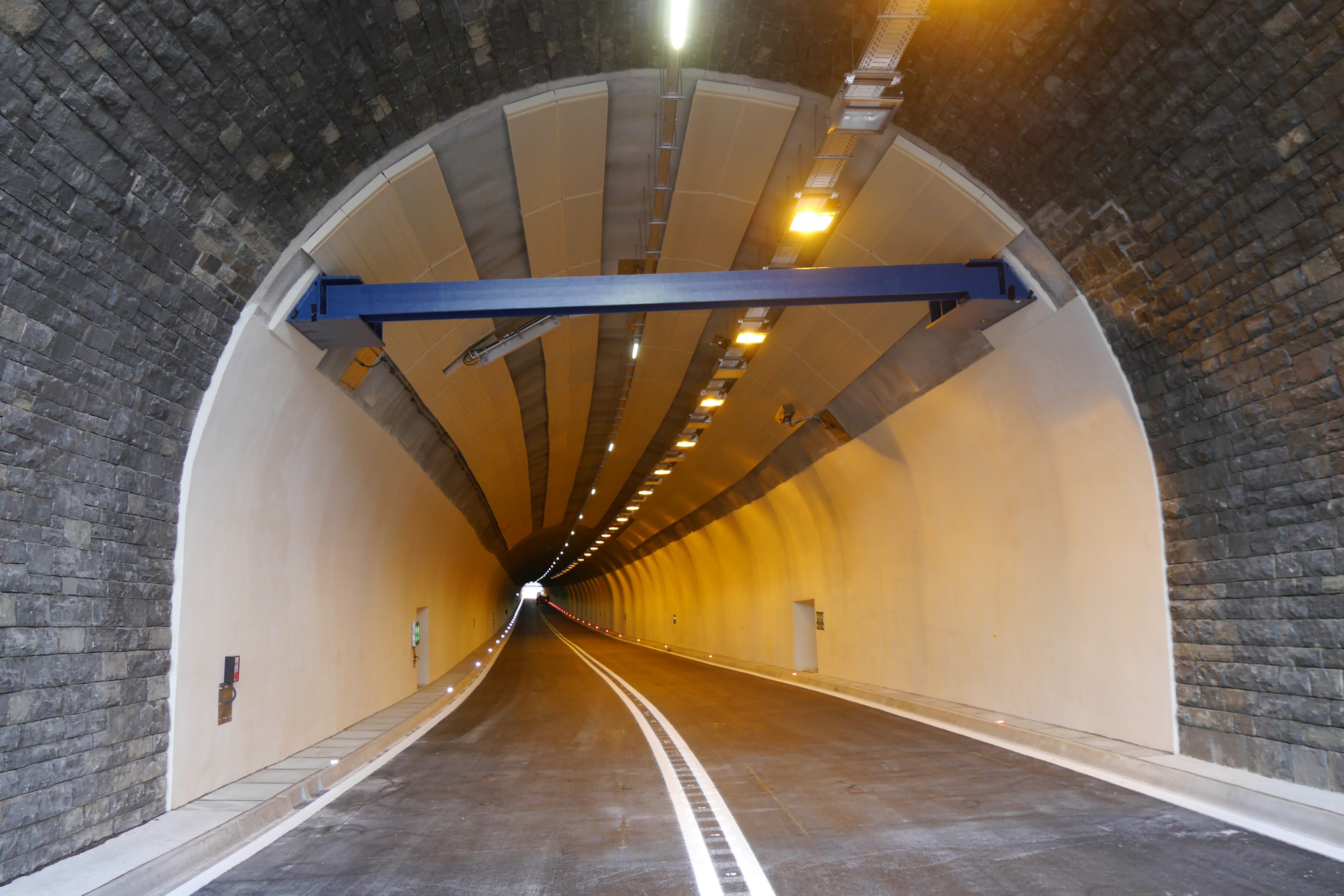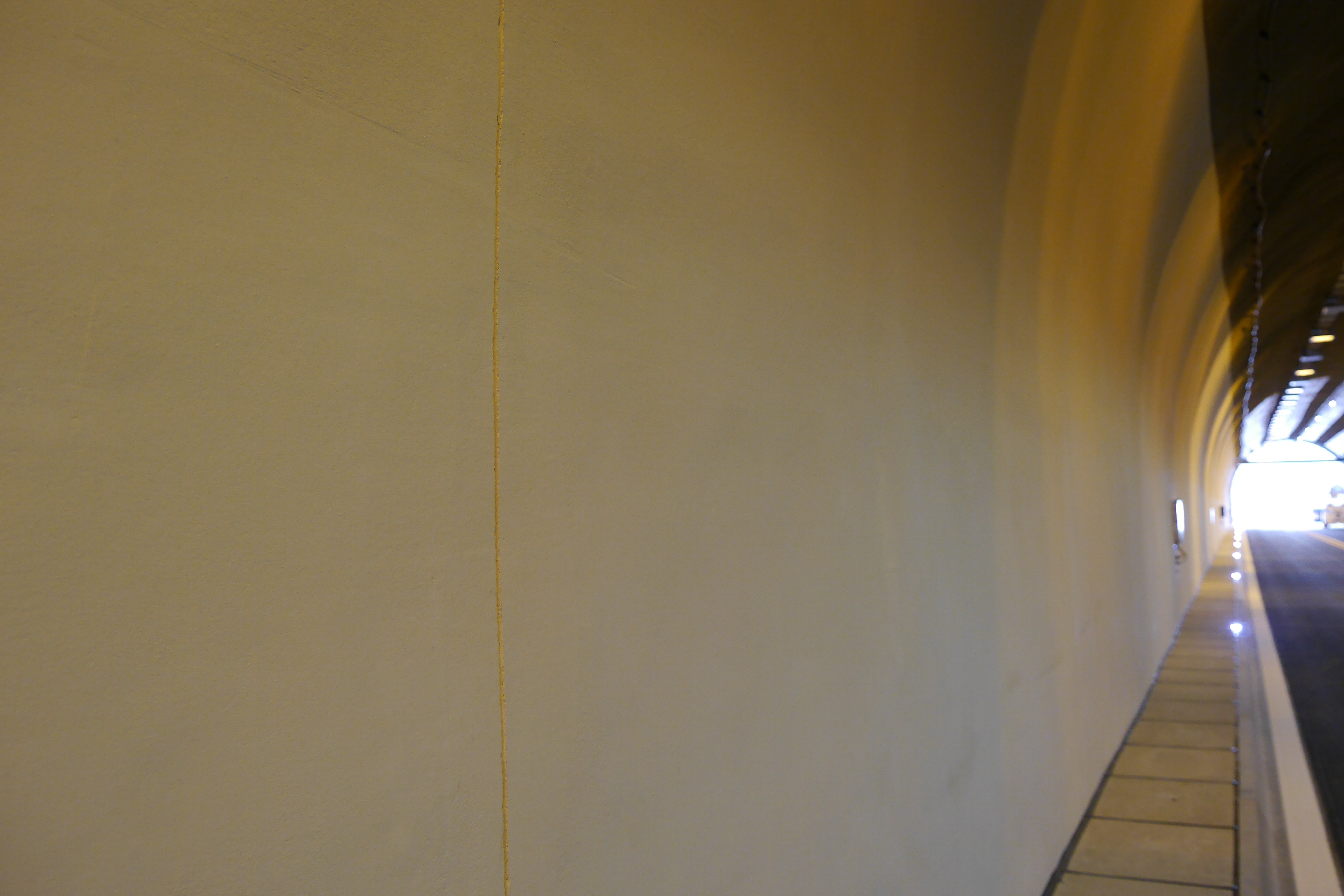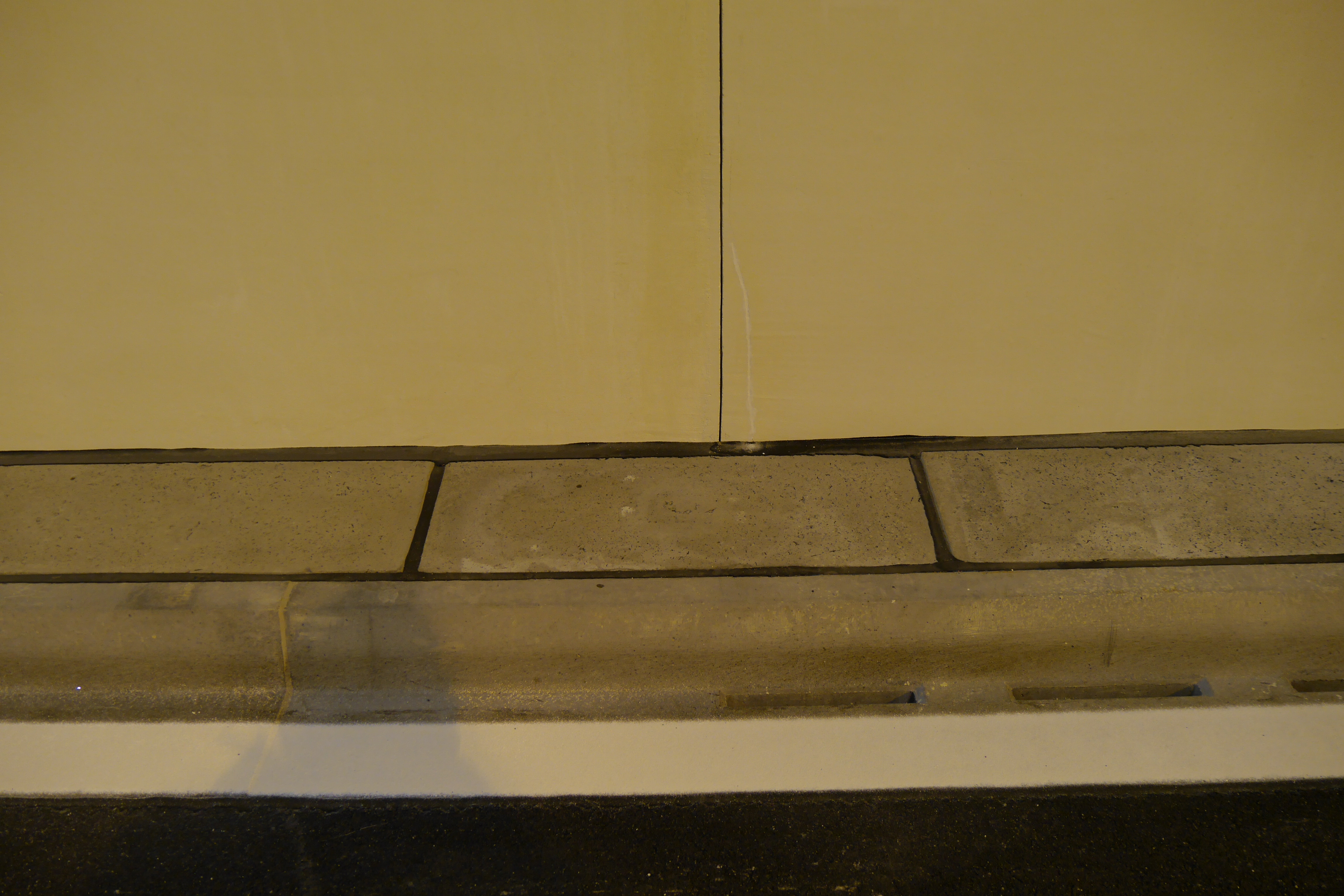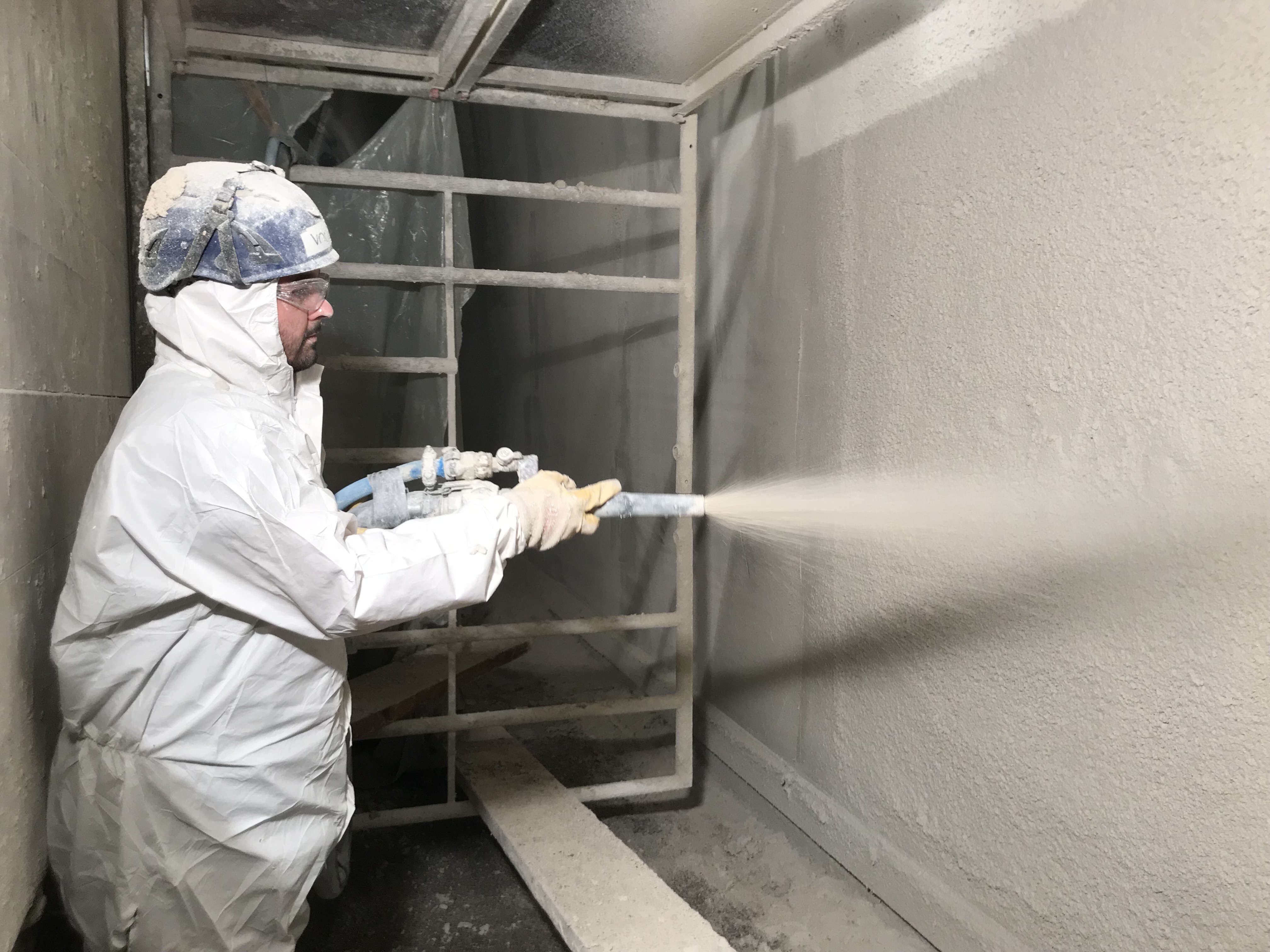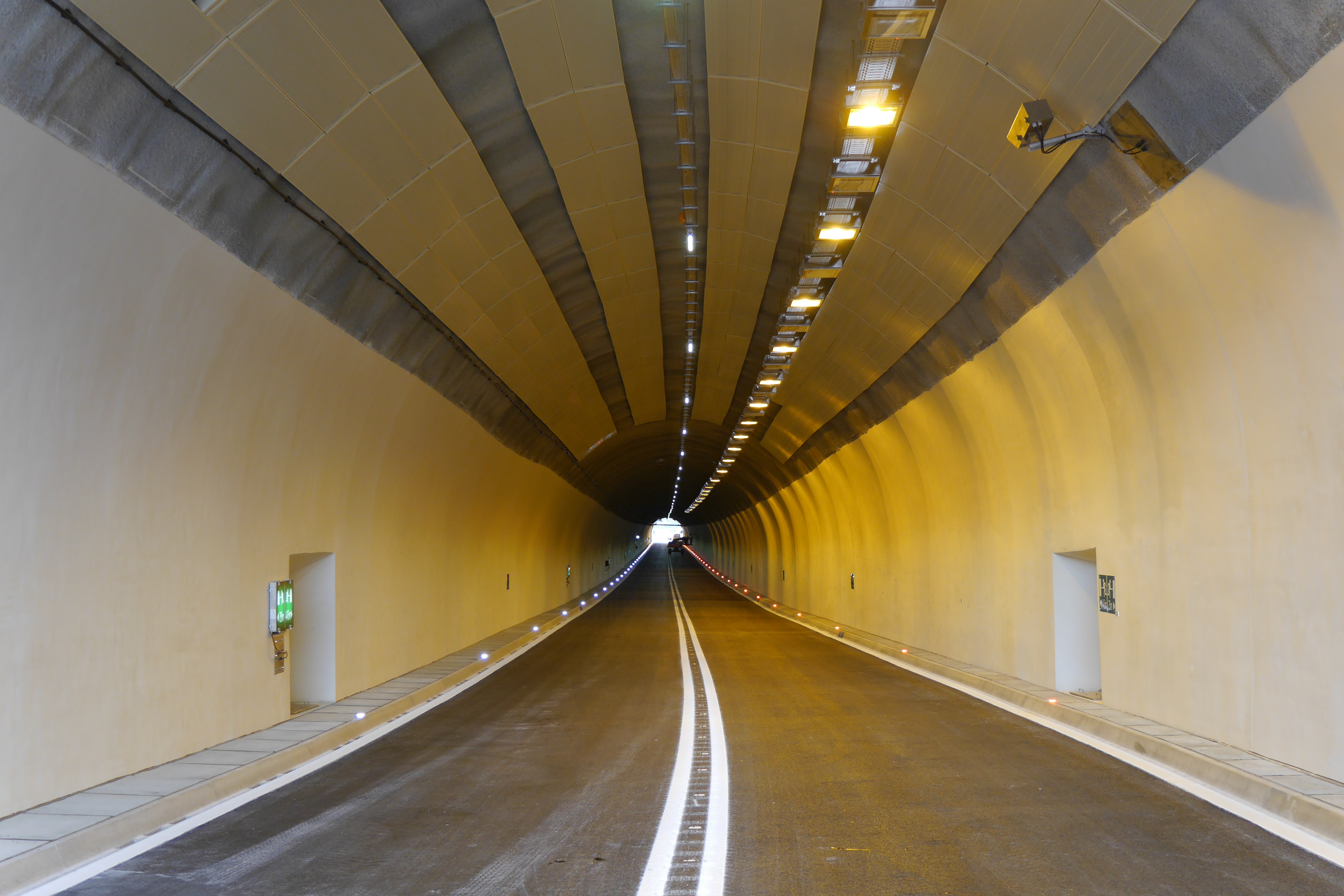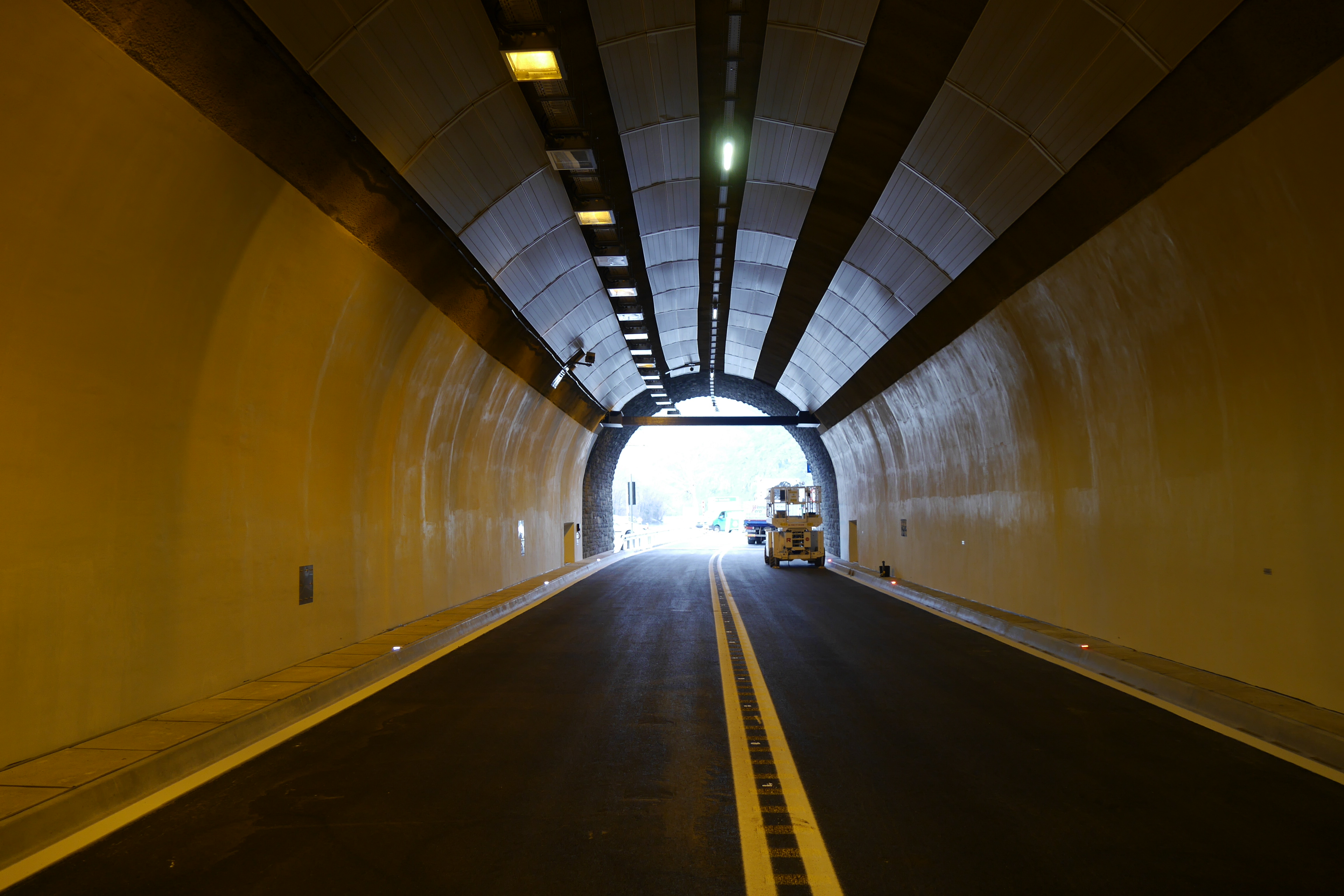Tunnel in Lower Austria Repaired with White Sprayed Mortar
Reopened to traffic after only five months construction time
At its original opening in 1959, the Dürnstein Tunnel in Lower Austria was the longest and most modern road tunnel in Austria. The general renovation, which was necessary now, was carried out with a spray mortar based on Dyckerhoff WEISS.
First of all, a sublayer of shotcrete based on gray cement was applied. As an alternative to the tendered prefabricated elements, the uppermost visible layer of the tunnel lining was constructed with 300 t of the premixed dry mortar NOVISAN SPM 4 K Sprayed Mortar White from Schretter & Cie from Vils. This is a cement-bonded, plastic-modified ready-mixed mortar with a maximum grain size of 4 mm, also for statically relevant components (serviceability class R4). The mortar, which is resistant to freeze-thaw with de-icing salt (XF 4), was applied by wet spraying at a thickness of 3-5 cm. Subsequently, the surface was smoothed so that the application of a further (conventional) coating could be omitted.
The aim of the renovation was to bring the tunnel up to technical standards and, among other things, to increase the brightness (degree of light reflection LRV ˃ 70) of the surfaces including traffic safety. The work included the removal of the inner shell and the false ceiling as well as the construction of a new inner arch from shotcrete and white cement mortar. In addition, the carriageway, drainage, electrical equipment, lighting, etc. were renewed.
The Dürnstein tunnel is 472 m long. The work was carried out in a construction period of only five months from the end of October to the end of March 2019. On 29 March, the line was reopened to traffic.
The contracting authority or client was the provincial government of Lower Austria. Habau Hoch- und Tiefbaugesellschaft from Perg was assigned the structural repair work and Vogl.Plus GmbH from Irdning carried out the spray mortar work with white cement mortar.
During the wet spraying process, the spraying mortar is pumped to the installation site via a pressure pipe after mixing, where it is pneumatically applied using a spraying nozzle and optimally compressed by the impact energy. The shotcrete process has the advantage that neither formwork nor conventional compaction are necessary, relatively thin layers are possible and, depending on the substrate, very high adhesive tensile strengths can be achieved. The material can also be applied overhead in the appropriate layer thickness.


